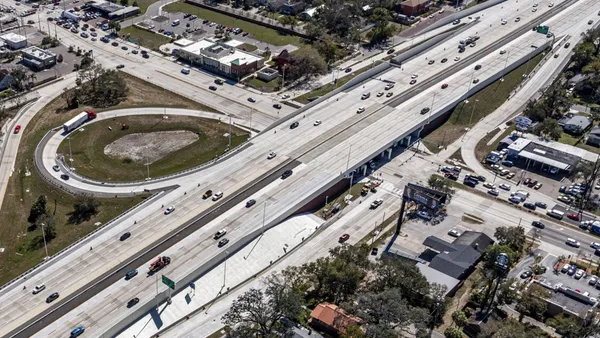In a big win for contractors and software providers alike, the $1.2 trillion infrastructure bill that President Joe Biden signed into law Monday serves up a small piece of the funding pie for construction technology.
The Infrastructure Investment and Jobs Act (IIJA) includes money for advanced digital construction management systems and related technologies. The program is funded at $20 million per year, for a total of $100 million, over five years.
According to the text of the IIJA, the goals of the program are to:
- Maximize interoperability with other systems, products, tools or applications.
- Boost productivity.
- Manage complexity.
- Reduce project delays and cost overruns.
- Enhance safety and quality.
The Coalition for Smarter Infrastructure Investments (CSII) released an announcement supporting the passage of the IIJA.
"It is important to note that many types of advanced digital technologies are proven," said Si Katara, co-founder and president of HeadLight, a visual-based inspection technology for infrastructure projects and a member of CSII. "State departments of transportation and other project sponsors should be encouraged to use these technologies in infrastructure projects funded under the legislation. That is a key message for our coalition."
The IIJA aims to support the adoption of a broad range of digital construction technologies throughout the construction lifecycle, from design and engineering to construction and operations, said David Ohrenstein, director of government affairs and senior public policy counsel at AEC software maker Autodesk.
The goal is to "promote adoption of digital tools to reduce risks of project delays and errors, develop more sustainable infrastructure, and deliver projects faster and more cost-effectively," he said.
Though the language in the IIJA is neutral, Katara said he anticipates the funding to flow into five buckets of construction technology:
- Visual-based inspection technologies that connect jobsites to engineering offices in real-time, boosting efficiency, reducing risk and accelerating project delivery.
- Construction management tools to administer contracts digitally.
- Electronic ticketing technology to remove paper from the construction material supply chain.
- 3D modeling and digital twin technology.
- Drones applied to construction, operations, maintenance and disaster recovery.
John Frost, vice president of business development at Propeller, a drone mapping software firm, said he also expects a bulk of the funding to flow into technologies around 3D mapping, drone visualization, data analysis and digital twins.
"The funding from the bill will focus on technology that will improve efficiency across worksites and remote teams and enhance working conditions for contractors, allowing for a larger impact in day-to-day operations," said Frost. "We're at the very beginning of a full integration of advanced, data-driven technologies in the construction space, so investment in these technologies will only continue to increase as companies implement them to win larger and more competitive bids and execute complex projects."
More funding needed
The funding from the public sector is a clear indication of "the critical role technology can play in designing and building better infrastructure," said Ohrenstein, and that "in this spirit, any investment is meaningful."
But some in the industry think even more IIJA funding could have been allocated to construction technology, especially when the amount is compared to the deluge of cash rushing into the space from the private sector. U.S. construction technology investor funding reached a record $2.1 billion last month, more than a 100% increase from a year ago.
"One-hundred-million dollars is not a lot, especially in the context of the private investments that have been pouring into the contech space for really the last three to four years," said Brad Barth, chief product officer at InEight, a project management software maker. "In the past, there really hasn’t been anything earmarked for technology. So, it's kind of a nice directional indicator that the focus on technology in this industry is increasing."
As supply chain issues and labor shortages continue to impact the industry, construction technology will allow companies to overcome these challenges by streamlining business practices and executing projects more efficiently, said Frost. While these types of technology are an investment, operators are realizing their immense value in reducing material waste, increasing worker efficiency, and improving data analysis, he said.
"Although the $100 million in funding for construction tech in the infrastructure bill is a welcomed investment, it doesn’t go far enough to meet the growing demand for innovative solutions in the industry," said Frost. "Operators who have been using tools such as 3D mapping and drone visualization are seeing huge ROI both in time and money saved, so now is the time to double down on investment in this sector."
Once contractors start to understand the benefits of greater adoption of digital construction technologies, there is "going to be a big push for even wider use," said Katara.















